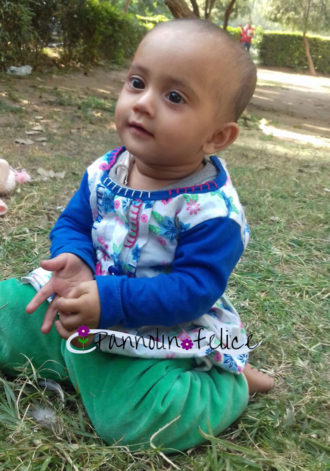Washable nappies, organic clothing for children, baby carriers and slings
Washable nappies, organic clothing for children, baby carriers and slings
 I publish this contribution on potty training written by an Italian mother who lives in a region of Northern India. To get used to having a broad view of the world…
I publish this contribution on potty training written by an Italian mother who lives in a region of Northern India. To get used to having a broad view of the world…
The use of disposable nappies for babies began in the last century with the growth of family well-being and with the increase of technological innovations. Some countries in the South of the world have not had (fortunately?) these opportunities and still live in a very different way than we are used to in the West. This happens more in countries where the poverty rate is very high, or in some place where the simple life of rural areas, in the open air, keeps intact the traditions of the past.
I was lucky enough to experience this reality in person in India, where I have been living for some years with my children and where I saw how my sisters-in-law behaved with her children. India is a fast developing country and with the arrival of well-being and the increased possibilities of families to travel, it is obvious that the comfort of the nappy takes hold quickly. However, its use is still very limited. In most Indian states, the climate is very hot for several months a year, this definitely favors the habit of leaving the children more exposed, and if they pee in the shorts, it does not take long to give a rinse and to dry clothes…
For newborns they usually use cotton triangles that are changed just dirty; children are left – summer and winter – only with a pair of shorts that change when they get wet. Of course it happens that you also wet the dress of those who are holding him in the arms, but with a little water you clean and then dry. Usually during the day, sometimes the mother tries to put the child “in position” and waits… If it’s been a while since the last time he peed, she is sure that he does, so for a while longer it is okay… When the child gets a little older, he learns to tell when to make a need, usually around the year/year and a half.
In rural areas and villages, life takes place mostly in the open air; in poorer families (some do not have a bathroom, they go to the fields…) children of 2-3 years often – when they are at home – wear only the blouse, which covers a little the bottom. Several times I saw children who bended down and did it where it happens, when they felt the need; then came the mother who washed the bottom and away… For the night it was put a waxed or plastic pad and a few wipes and when the baby is wet he is changed. Well, there’s always more to wash in the morning…
Another habit that surprised me a lot at the beginning, because it goes completely in contrast with Western habits, was to keep the child to sleep with his parents from the time he is born, up to at least 5-6 years… In part it is due to the fact that the houses are very modest and therefore generally there is no “children’s room” with their cot; the double beds however are larger and more rigid than ours, so in the end it is not even so uncomfortable… But another important reason is that baby needs someone’s closeness to be reassured, calmed and not feeling abandoned. In fact, Indian children are held very much in the arms (if not by parents, other family members or older brothers) and it is difficult to hear them cry, only in cases of physiological disorders, otherwise they are very quiet.
Of course, things seem much more complicated for us: in the West often the mother – especially in the morning – is alone with 2-3 children to deal with and send to school, you have to keep up the times, deal with the climate… Between one extreme and the other I believe that the right thing is always in the middle: when you travel or you have to go out in the cold, the nappy is a great comfort; when you are at home or the weather is warmer you can do very well without; the child feels freer and soon learns to understand when “the need” comes.
Angela
RELATED ARTICLES
Write your comment
By using the site, you accept our use of cookies. more information
This site uses cookies to provide the best browsing experience possible. By continuing to use this site without changing your cookie settings or by clicking on "Accept" you allow their use.